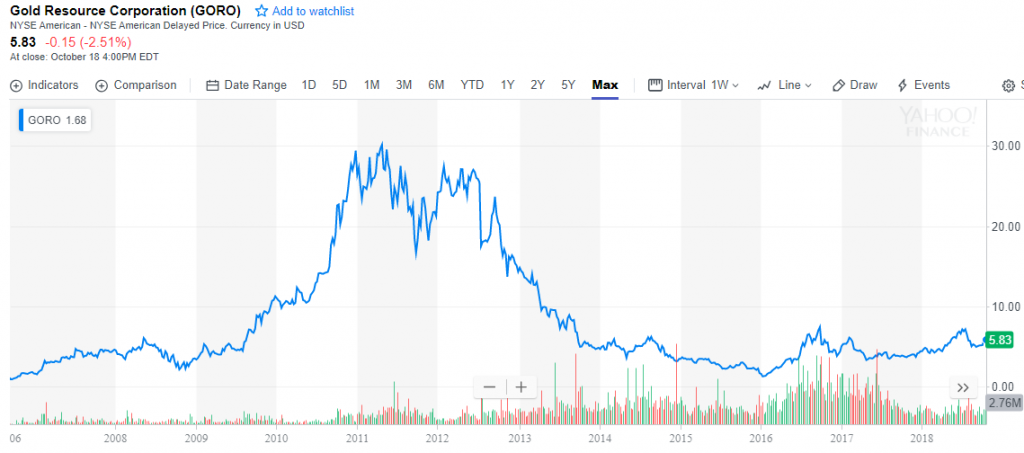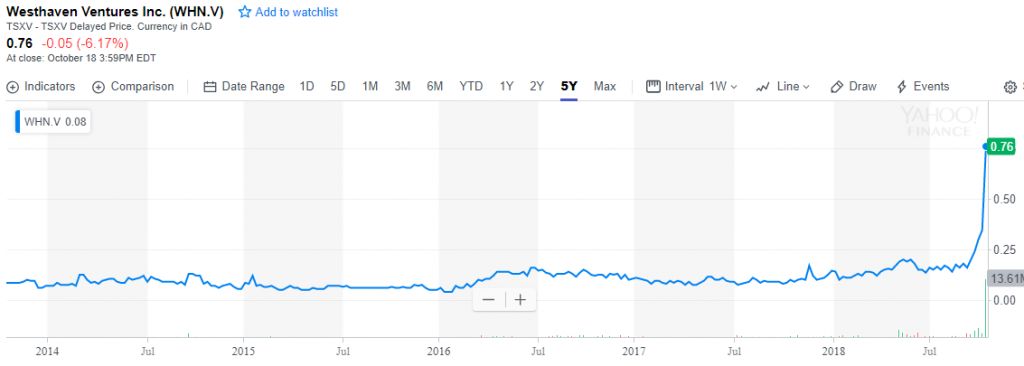“Investing is hard.”
It was a theme microcap investor Ian Cassel returned to again and again during his October 18 talk at the Small-cap Discoveries conference in Vancouver, run by Vancouver-based newsletter writer Paul Andreola.
Successful investing is counterintuitive to human nature, Cassel told the group of about 75 investors, most of them subscribers to Smallcap Discoveries, the investment newsletter run by Andreola and his business partner Brandon Mackie. “Retraining your brain is a lifelong process.”

One common mistake investors make is to sell more of their winners and buy more of their losers. Cutting losses quickly and averaging up when management executes is a more rewarding strategy, Cassel said.
Another interesting point for investors: in baseball terms, slugging percentage is more important than batting average. It’s those extra-base hits that really start to grow wealth over time, as opposed to the singles.
Cassel has been a full-time microcap investor for 10 years and is the co-author of two books about Intelligent Fanatics, the great corporate leaders who build sustainable businesses. In 2011, he founded MicroCapClub, a community where experienced microcap investors share ideas and discuss trading.
Cassel said his strategy on position sizing has changed. He used to immediately take on a large position in a company that passed his investment litmus test — as well as the risks associated with going “all-in.”
Now, he takes a one-third position size after extensive due diligence and talking to management. Cassel takes his second third when he has travelled to and met management at their head office, and gotten a sense of company culture and other details. The final third is purchased when management executes on their promises and vision.
Most management teams over-promise and under-deliver, Cassel noted — a reality familiar to junior mining speculators. A key to successful investing is finding management teams that under-promise and over-deliver, he said. An investor’s willingness to perform deep-dive due diligence will give him or her a significant edge over the majority of investors, who do their research with bums planted to a chair, eyes glued to a computer.
________________________________________
Join Resource Opportunities now and profit by getting in early on under-the-radar investments in the junior resource sector! Use coupon code “CEO” at Resource Opportunities to save US$100 off regular prices of US$299 for a 1-year subscription and US$449 for a 2-year subscription.
____________________________________
Cassel illustrated the “investing is hard” mantra with some real-life examples, featuring both sad and happy endings.
The story of Apple (AAPL) cofounder Ronald Wayne is relatively well-known, but that doesn’t make it any less dramatic: Wayne sold his 10% stake in Apple for $800 in 1976. A 10% stake in Apple at the current valuation is worth about $100 billion.
When asked about it decades later, Wayne said he had made the “best decision with the information that was available to me at the time.”
“Investing is hard, even when you’re close to a story,” Cassel said.
The narrative of SoftBank founder Masayoshi Son has a happier ending, albeit after more ups and downs than the wooden roller-coaster at the PNE.
Son was a child when his Korean parents moved to Japan, and he grew up poor. He began building up and selling businesses while at university in the U.S., netting millions. He invested early in Internet companies and built a dynamo with SoftBank, which at the peak of the Internet bubble owned an estimated 10-12% of the value of all Internet companies. When the bubble burst, Son lost 99% of his net worth.
However, one of the companies SoftBank bought a stake in was a fledgling Chinese Internet play called Alibaba. That investment worked out nicely and Son is now Japan’s wealthiest man, and SoftBank back on top.
Later in the day, I chatted with Cassel about investing and the resource market. Not only was he aware of the ferocity of the bear market, he had some direct experience with a gold company early in his investing career.
Before he was a full-time microcap investor, Cassel used to do some investor relations work for public companies that he liked and whose shares he owned. One of those was Gold Resource Corp. (GORO). Gold Resource had a gold mine in Mexico and was one of those rare producers that actually made money, with a management team dedicated to creating shareholder value and paying dividends. Cassel got in early, with a cost basis of just over a dollar a share, and rode the stock up before exiting north of $6 a share.
Gold Resource Corp. soon began paying dividends, and Cassel watched from the sidelines as the company built its annual dividend, paid monthly, to $1 a share on its way to a $30 stock price (GORO now trades for just under US$6/share). Painful, to be sure, but a rather charmed “miss” in a sector known to devour shareholder capital.
Follow Ian Cassel on Twitter for more investing insights: @IanCassel
I had my own “investing is hard” moment recently, involving Westhaven Ventures (TSXV-WHN). I initiated coverage on the stock back in April 2016 at 14 cents, describing it as a “speculation on a neglected gold district and a management team with a track record of discovery.” A visit to site with Gareth Thomas, now the CEO, and CFO Shaun Pollard demonstrated Shovelnose’s prospectivity, proximity to Vancouver, and exceptional infrastructure.
But I gave up and sold most of my shares a year later, frustrated with small drill programs and only sniffs of lower-grade mineralization. Westhaven was hunting for the high-grade feeder system and having difficulty finding it. It was a lack of patience, not a fatal flaw, that led me to drop coverage.
Fast-forward to Westhaven’s recent intercept of 17.77 metres of 24.5 g/t gold at Shovelnose, which sent the stock to 81 cents — up 118% on the day. It was an exceptional hit and Westhaven is still awaiting assays from a further three drill holes. The company is already planning a fully funded follow-up drill program, and can drill year-round at the property.
I sent out a Flash Alert to subscribers on the evening of that stellar intercept, resuming coverage on Westhaven and touching on Strongbow Exploration (SBW-V), which owns 3.1 million WHN shares and a royalty on Shovelnose. The next morning I added to my Westhaven position at the open. A visit to Westhaven’s office later that day confirmed my bullishness. It’s not my style to chase stocks, but I believe Westhaven could be onto a large gold system at Shovelnose. The company has a large land position and other highly prospective projects within the belt, as well. A very tight share structure should help propel this stock if subsequent results impress.
Westhaven shares traded above 90 cents on news of the intercept but have since dipped down to the 70-cent range.
Disclosure: James Kwantes is editor and publisher of Resource Opportunities, a subscriber-supported newsletter dedicated to finding under-the-radar resource stocks with high upside potential. He owns shares of Westhaven Ventures and Strongbow Exploration. This is not investment advice and all investors need to do their own due diligence. Use coupon code “CEO” at ResourceOpportunities.com to save US$100 off regular subscription prices of US$299 for one year or US$449 for two years.


 James Kwantes is the editor of Resource Opportunities, a subscriber supported junior mining investment publication. Mr. Kwantes has two decades of journalism experience and was the mining reporter at the Vancouver Sun. Twitter:
James Kwantes is the editor of Resource Opportunities, a subscriber supported junior mining investment publication. Mr. Kwantes has two decades of journalism experience and was the mining reporter at the Vancouver Sun. Twitter:  Resource Opportunities (R.O.) is an investment newsletter founded by geologist Lawrence Roulston in 1998. The publication focuses on identifying early stage mining and energy companies with the potential for outsized returns, and the R.O. team has identified over 30 companies that went on to increase in value by at least 500%. Professional investors, corporate managers, brokers and retail investors subscribe to R.O. and receive a minimum of 20 issues per year. Twitter:
Resource Opportunities (R.O.) is an investment newsletter founded by geologist Lawrence Roulston in 1998. The publication focuses on identifying early stage mining and energy companies with the potential for outsized returns, and the R.O. team has identified over 30 companies that went on to increase in value by at least 500%. Professional investors, corporate managers, brokers and retail investors subscribe to R.O. and receive a minimum of 20 issues per year. Twitter: 
